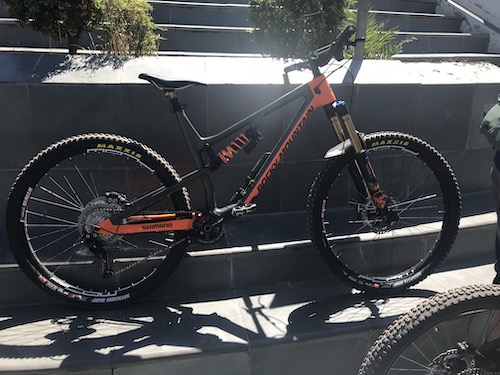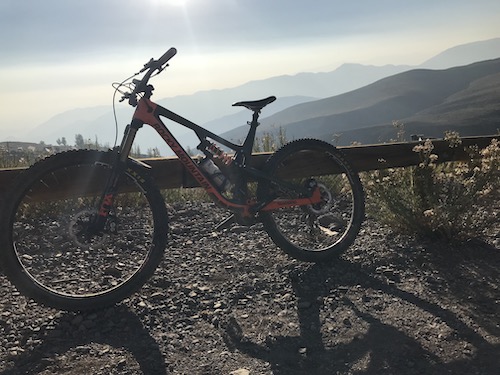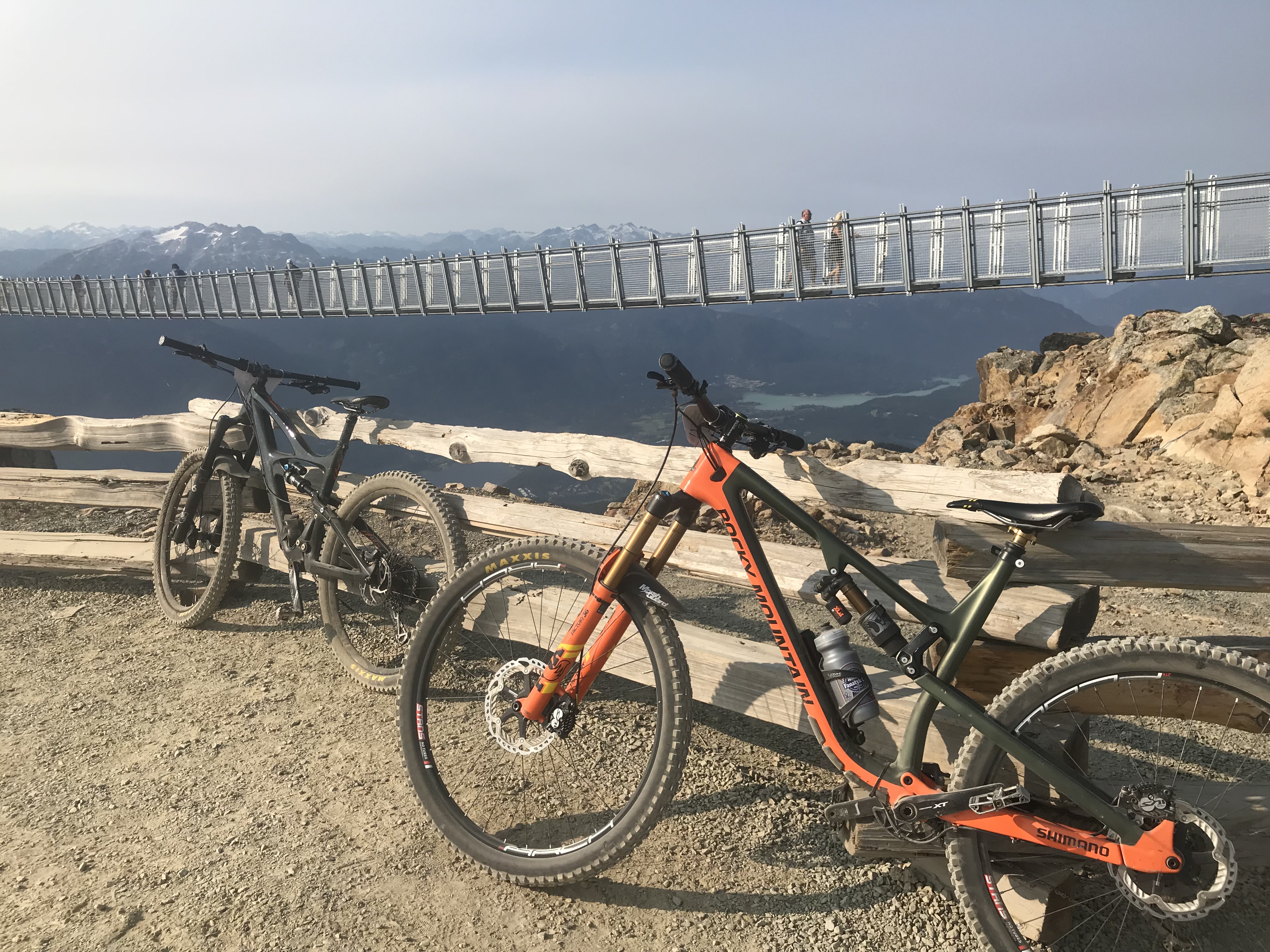Throughout the year in 2017, I noticed that the Rocky Mountain Factory Enduro team wasn’t using the Slayer on the EWS. They were using the new Altitude that was released half way through the year. I was curious why they were doing that since the Slayer was advertised as the enduro race bike. I wrote more about this in a blog post at the end of august and explained my findings.
When it became time to order bikes for 2018, I was trying to make a choice between the Altitude and Slayer. Almost as I was about submit my order, I saw an announcement for an updated Instinct. The Instinct was very similar to the altitude, but had 29″ wheels and less travel. There was a BC Edition instinct which had more travel than the normal instinct. I heard rumours that it would be the enduro race bike for the 2018 season. This made my decision even harder! After much thought and consideration, I decided to order an Instinct BC frame.

I built it up right before I went to South America in late February and only got 2 rides on it before I had to pack everything up, both of which were half in the snow. I didn’t have a lot of time to get used to it in Canada, but I got plenty of time in on it in Chile. I started from scratch with a frame and pretty much did a “dream build”. Fox suspension and dropper, Shimano XT Drivetrain and Saint brakes with Stans Flow EX wheels. The bike came with a Fox DPX2, but I had purchased a coil DHX2 earlier on in the winter and decided to use that for South America due to the large elevation change and rough slippery conditions. The only parts I borrowed from my Slayer were the bar and stem because the ones I had ordered hadn’t come in yet. One unique thing I did was use the bottom half of a full DH chain guide with the guide wheel to make sure that the chain didn’t come off. I had dropped a chain on my Slayer in the Kamloops Enduro which cost me 3 minutes and a potential win at that race, and I wasn’t about to let that happen at an EWS.

I could tell instantly that the big wheels were an advantage and it felt like in some places where I normally would have crashed, I didn’t because the bigger wheels didn’t get caught up and rolled over things better than 27.5″. A disadvantage that I was surprised by was the climbing. I always thought that 29″ wheeled bike pedalled really well. XC racers and road bikers use them because they roll so fast. While 29″ wheels do roll faster, the tires also weigh more, so you’re adding a lot of rotational weight. Sure a 29″ wheel with an EXO casing tire will roll faster than a 27.5″ DH tire, but put on a 29″ DH casing tire and the added weight will slow your pedalling efforts right down.
I struggled a bit with the gear ratio at first as well. I generally use a 11-46T 11 speed cassette with a 32T chainring in the front. The added length in diameter of wheel/tire obviously changes how fast you go with each rotation of the pedal. It wasn’t too big of a deal for most of the year and I got used to it after a little while. The only place where It negatively affected me was the Whistler EWS where the fire roads we were climbing were so steep. On a 27.5 wheel I would have been fine, with this setup, but I ended up having to put on a 30T chainring on the front to be able to stay on my bike during the steep climbs instead of pushing. This helped for climbing but also reduced the top end of the gears because of the smaller size ring in the front. Guess I’ll have to get stronger legs to keep that 32T on there next year.

I had the bike setup with a couple of different suspension setups throughout the year. I started out with a 160mm Fox 36 in the front and the coil shock in the rear. Around the end of June I was consistently using the air shock as opposed to the coil for a couple of reasons. Weight was a big reason. The “racing weight” (full water bottle, spare tube, pump, CO2, Etc) with the coil shock was 38 lbs. Putting on the air shock brought that down a significant amount. The air shock is also more adjustable. You don’t need to spend money on a bunch of different weight springs, you just need a shock pump. I found that with the air shock I liked to run it at around 35% or more sag. This slackened out the bike a bit and had a lower feeling to it. In July, I got a new fork, and this one was 170mm. The added 10mm of travel was nice to have for the riding I was doing later on in the season, and made a big difference on steeper trails. This fork also had the Grip2 damper in it, which is something that I’ll write a whole review about soon. I rode with the 170mm fork and the air shock for the rest of the summer, but have recently put the coil shock back on and have been enjoying it. With the longer travel fork, I no longer feel as stood up as I did due to the shock having less sag, and it handles the faster, bigger hits a bit better. I can’t say if one is overall better than the other, they’re each better at different things.
(The first fork I had was a Non boost fork, which was the only one I could get before leaving for South America. It performed the same as a boost, but if I ever broke something or needed support at a race, nobody would have those parts because all the teams used boost forks. If I weren’t racing, I wouldn’t have cared, but it would suck to spend so much time and money on a race and then break something that nobody has parts to fix.)
It is by far my most favorite trail bike that I’ve owned and ridden. It climbs well, considering the weight and the amount of travel and it’s a machine on the downhills!
